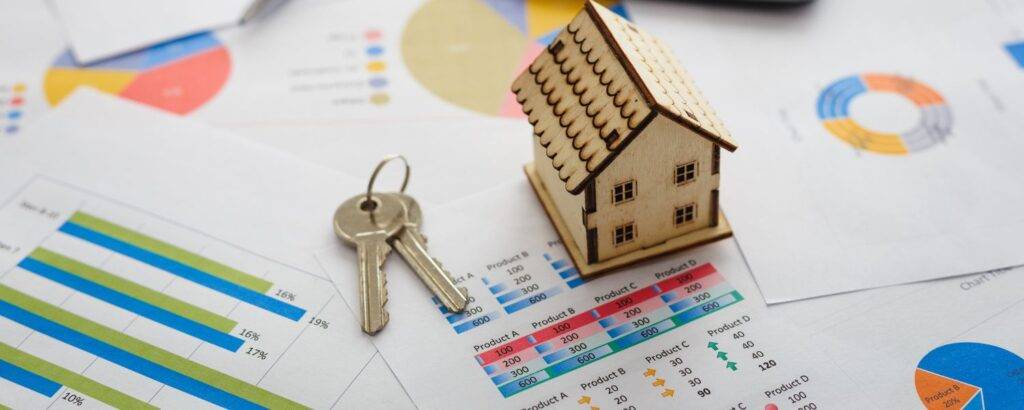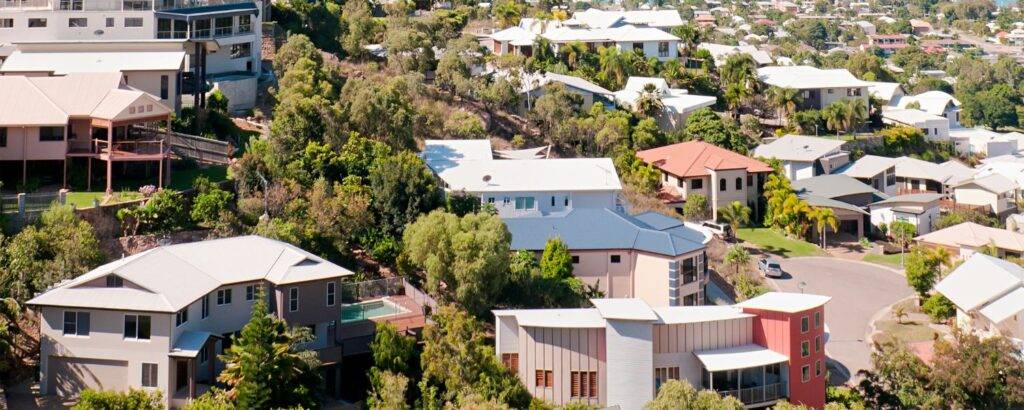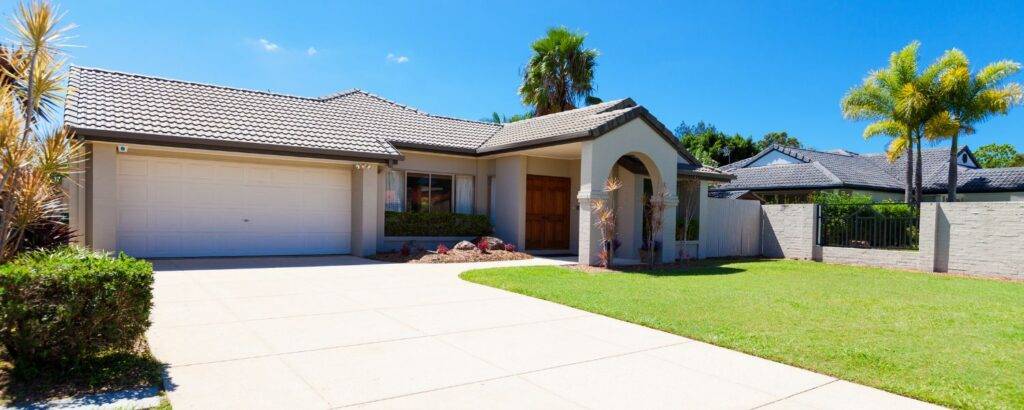In recent years, Australia has emerged as a hub for sustainable and eco-friendly properties. With a growing awareness of environmental concerns and a desire for energy-efficient, eco-conscious living, sustainable housing typologies have become a significant focus in the real estate market. In this blog post, we’ll explore the rise of sustainable properties in Australia, examining the demand, trends, and impact on the real estate landscape.
Sustainable Properties in Australia

Sustainable Properties in Australian Investors and homeowners alike increasingly focus on sustainable properties in Australia. These eco-conscious homes are not just a statement about environmental responsibility; they are a smart investment in the future. Sustainable properties are designed with energy efficiency, environmental impact, and long-term sustainability.
The Growing Demand for Sustainable Properties

Australia, known for its diverse landscapes and unique ecosystems, has witnessed a notable shift towards sustainability and eco-friendly living. This transition is not only driven by environmental concerns but also by the economic and lifestyle benefits that sustainable properties offer.
1. Economic Viability
Sustainable residences are engineered to minimise energy usage, resulting in reduced utility costs. As energy expenses continue to climb, an increasing number of Australians seek ways to cut down on their monthly bills.Sustainable properties provide a compelling solution, offering long-term cost savings.
2. Environmental Awareness
The global call to address climate change has led to a surge in environmental consciousness. Australians are now more aware of their carbon footprint and are actively seeking eco-friendly housing options that minimise their impact on the environment.
3. Government Initiatives
Various government initiatives and incentives promote sustainable housing. These measures include grants, rebates, and tax benefits for homeowners and builders who invest in eco-friendly features.
The Impact on the Real Estate Market

The rise of sustainable properties is reshaping the Australian real estate market in several ways:
1. Increased Property Values
Sustainable features can significantly increase property values. Homes and apartments equipped with eco-friendly technology tend to command higher prices in the market.
2. Higher Rental Yields
Eco-conscious tenants are willing to pay a premium for sustainable properties. As a result, property owners can enjoy higher rental yields.
3. Long-Term Savings
Sustainable properties not only benefit homeowners but also offer long-term cost savings for tenants. Lower utility bills contribute to improved financial well-being.
4. Market Competitiveness
Developers and builders prioritising sustainability gain a competitive edge. This drives innovation and encourages the construction of more eco-friendly properties.
The Future of Real Estate in Australia

The future of real estate in Australia is undergoing a remarkable transformation, driven by the increasing popularity of sustainable properties. As more and more Australians recognise the long-term benefits of eco-conscious living, this shift promises to shape the real estate landscape in profound ways. Here are some key aspects of this evolving real estate future:
1. Sustainable Urban Development
Cities and urban areas across Australia are witnessing sustainable urban development projects. These initiatives prioritise eco-friendly infrastructure, green spaces, and energy-efficient designs. As a result, city dwellers are increasingly enjoying the benefits of clean and healthy living environments.
2. Investment in Sustainable Infrastructure
The government’s investment in sustainable infrastructure is paving the way for a greener and more sustainable future. This includes improved public transportation, renewable energy sources, and efficient waste management systems. These developments not only enhance the quality of life but also attract property investments.
3. Rise of Sustainable Communities
Sustainable communities are on the rise in Australia. Shared sustainability goals, eco-friendly practices, and a strong environmental responsibility characterise these communities. This trend fosters a sense of belonging and shared purpose among residents, further enhancing the appeal of sustainable living.
4. Property Value Appreciation
Sustainable properties are not only environmentally responsible but also financially savvy. They tend to appreciate over time as demand for such homes increases. With growing awareness of climate change and eco-conscious living, the market for sustainable properties is expected to remain robust.
5. Incentives and Rebates
The Australian government continues to offer incentives, rebates, and tax benefits for sustainable property development. These financial perks make it financially viable for builders and buyers to invest in eco-friendly properties.
6. Quality of Life
Sustainability isn’t just about reducing carbon footprints; it’s also about enhancing the quality of life. Sustainable properties offer improved indoor air quality, natural light, energy efficiency, and a healthier living environment. They enhance the physical and mental well-being of residents.
Exploring Sustainable Housing in Australia

Australia is no stranger to embracing innovation and forward-thinking solutions, and sustainable housing is no exception. The concept of sustainable housing goes beyond traditional home design. It encompasses a holistic approach to building and living, emphasising reducing environmental impact and enhancing the quality of life for residents. Here’s a deeper look at this exploration:
1. Eco-Friendly Design
Sustainable housing in Australia focuses on environmentally friendly design principles. This includes energy-efficient building materials, solar power integration, rainwater harvesting systems, and sustainable landscaping. These characteristics not only diminish the property’s environmental impact but also result in enduring cost savings for homeowners.
2. Energy Efficiency
A core element of sustainable housing is energy efficiency. Australian homes are increasingly being designed to minimise energy consumption. This involves better insulation, energy-efficient appliances, LED lighting, and smart home technologies that allow residents to manage their energy usage more effectively.
3. Waste Reduction
Sustainable housing aims to minimise waste production during construction and throughout the life of the property. It promotes recycling, composting, and using environmentally friendly building materials that generate less waste. These practices contribute to reducing the overall environmental impact.
4. Indoor Air Quality
Sustainable housing prioritises indoor air quality by using low-VOC (Volatile Organic Compounds) materials, which reduce the emission of harmful chemicals. Enhanced ventilation systems ensure a constant supply of fresh air, creating a healthier living environment for residents.
5. Natural Light and Ventilation
Australian sustainable residences prioritise abundant natural light and effective ventilation systems in their designs. Large windows, skylights, and open-concept layouts bring the outdoors in. This not only reduces the need for artificial lighting and heating but also enhances the overall well-being of occupants.
6. Green Landscaping
Sustainable housing isn’t limited to the structure itself; it extends to the surrounding environment. Green landscaping practices include drought-resistant plants, organic gardening, and water-efficient irrigation systems. This creates a harmonious connection between the property and the natural world.
7. Sustainable Communities
Some Australian cities and regions are spearheading the development of sustainable communities. These communities encourage eco-conscious living by incorporating shared sustainability goals, communal gardens, electric vehicle charging stations, and bike-friendly infrastructure.
8. Smart Home Technologies
Sustainable housing often incorporates smart home technologies that enable residents to manage energy usage, security, and comfort efficiently. These technologies include smart thermostats, lighting control systems, and home automation.
9. Long-Term Investment
Sustainable housing is not just about environmental responsibility; it’s a smart long-term investment. Over time, sustainable properties tend to appreciate as the demand for eco-friendly homes increases. These homes offer homeowners substantial savings on utility bills, making them an economically sound choice.
Conclusion
The rise of sustainable properties in Australia is not just a trend; it’s a significant shift towards a more eco-conscious and economically viable way of living. Sustainable housing typologies, driven by demand, environmental awareness, and government support, are transforming the real estate landscape.
Whether you’re a homeowner looking to invest in a sustainable property or a developer aiming to lead the market with eco-friendly designs, the future of real estate in Australia is green, sustainable, and full of promise.
Ready to explore sustainable property investment opportunities in Australia? Contact us today, and let’s take the first step towards a greener future!




